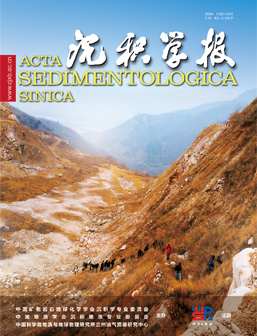Formation mechanism of Toarcian lacustrine siderites in the Ordos Basin, North China: insights into the Toarcian Oceanic Anoxic Event (Early Jurassic)
doi: 10.14027/j.issn.1000-0550.2024.126
- Received Date: 2024-08-22
- Available Online: 2025-03-04
-
Key words:
- Ordos Basin /
- Siderite /
- Genetic mechanism /
- Early Jurassic /
- Anoxic event
Abstract: Abstract (Objective) In marine strata of the Toarcian Oceanic Anoxic Event (T-OAE), the widespread siderites are believed to result from the low sulfate concentration and increased terrestrial iron supply. Similar large amount of siderites were also reported in paleolakes in the same period. However, the mechanism of lacustrine siderite and its connection with the T-OAE remain unexplored, which is crucial to better comprehend the lacustrine biogeochemical cycling in early Toarcian. (Method) Mineralogical and carbon isotope geochemical analyses were performed on the siderite samples from the lacustrine Anya section of the Ordos paleolake. By integrating major and trace element data, we investigated the sources of iron and carbon, as well as the sedimentary environment. This allowed us to explore the formation mechanism of siderites under the T-OAE climatic change. (Result) The coexistence of pyrites and siderites was observed under scanning electron microscopy. The values of inorganic carbon isotopes(δ13Ccarb) vary from ?11.25 to +16.32 ‰, and the range of organic carbon isotope(δ13Corg) values is from ?32.03 to +14.33 ‰. The rare earth elements (REEs) exhibited an enrichment of light REEs and the depletion of heavy REEs, with Eu anomalies ranging from 0.69 to 0.85. (Conclusion) The iron source of the Anya siderites is derived from terrestrial inputs. Carbon involved in siderite formation included HCO3- produced via the methanogenesis, as well as carbon released from organic matter decomposition and the methane aerobic oxidation, either bacterially in the suboxic zone, or archaeally below oxic-anoxic interface right after methane production. The pore fluids during siderite formation was suboxic to anoxic environment. During the T-OAE, intensified continental weathering and increased surface runoff input fluxed abundant iron ions into lake basins. The widespread anoxia, abundant organic matter content, and low sulfate concentrations in the lakes created favorable conditions for siderites, leading to the extensive siderite depositions. Future work is needed to further verify whether such T-OAE-related siderites is a regional influence or a worldwide phenomenon.
| Citation: | Formation mechanism of Toarcian lacustrine siderites in the Ordos Basin, North China: insights into the Toarcian Oceanic Anoxic Event (Early Jurassic)[J]. Acta Sedimentologica Sinica. doi: 10.14027/j.issn.1000-0550.2024.126 |






 DownLoad:
DownLoad: